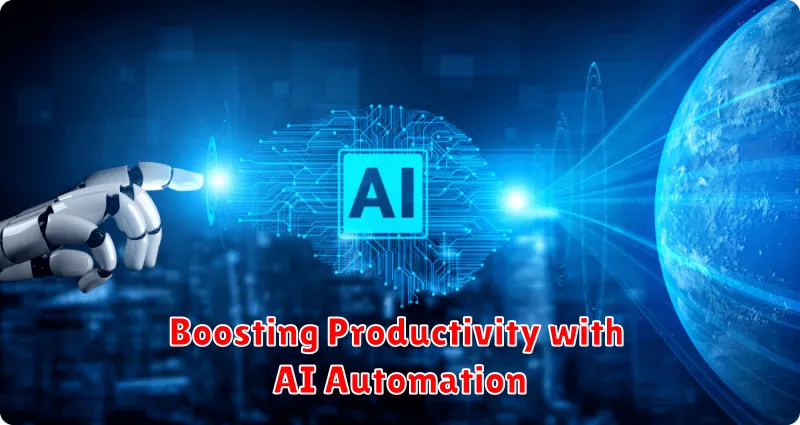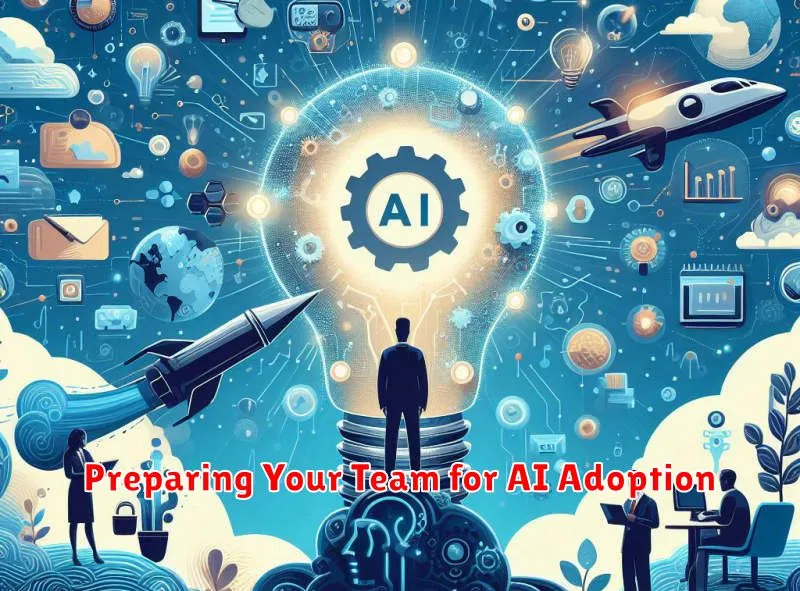Artificial intelligence (AI) is rapidly transforming the business landscape, revolutionizing operations, and redefining how companies compete and thrive. From automating mundane tasks to generating groundbreaking insights, AI is no longer a futuristic concept; it’s a present-day reality impacting businesses of all sizes across various industries. This impact includes streamlining processes, enhancing decision-making, and creating innovative products and services, making AI proficiency a crucial factor for success in today’s dynamic market. Understanding and implementing AI solutions is becoming less of an option and more of a necessity for businesses aiming to stay ahead of the curve.
This article delves into the multifaceted impact of AI in business, exploring its transformative effects across key functional areas. We’ll examine how AI is driving efficiency gains, improving customer experiences, and fueling innovation. We’ll also discuss the strategic implications of AI adoption, including the challenges and opportunities businesses face in harnessing the power of this revolutionary technology. Whether you are a business leader, an entrepreneur, or simply curious about the future of work, this article will provide valuable insights into the evolving role of AI in business and its potential to reshape industries across the globe.
Understanding AI Basics
Artificial intelligence (AI) is a broad field encompassing technologies that enable computer systems to perform tasks normally requiring human intelligence. These tasks include learning, problem-solving, and decision-making. AI systems are designed to analyze data, identify patterns, and make predictions or recommendations based on the information processed.
There are various types of AI, ranging from narrow or weak AI, designed for specific tasks like playing chess or recommending products, to the theoretical concept of strong AI or Artificial General Intelligence (AGI), which would possess human-level cognitive abilities. Current AI applications in business primarily utilize weak AI.
Machine learning is a subset of AI where algorithms allow systems to learn from data without explicit programming. Deep learning, a further subset of machine learning, utilizes artificial neural networks with multiple layers to analyze complex data and extract intricate patterns.
AI Applications in Modern Businesses
Artificial intelligence is rapidly transforming business operations across various sectors. Customer service is a prime example, with AI-powered chatbots providing 24/7 support and personalized recommendations. Marketing and sales teams leverage AI for targeted advertising, lead generation, and sales forecasting.
In operations and supply chain management, AI optimizes logistics, predicts demand, and automates inventory control. Human resources departments utilize AI for talent acquisition, employee training, and performance analysis. Furthermore, AI plays a crucial role in fraud detection and risk assessment, enhancing security and compliance.
Boosting Productivity with AI Automation

Artificial intelligence (AI) is rapidly transforming businesses, and one of its most significant impacts is on productivity. AI-powered automation tools can streamline repetitive tasks, freeing up human employees to focus on more strategic and creative work.
This automation can take many forms, from automating data entry and customer service interactions to optimizing complex workflows and supply chain management. By taking over mundane and time-consuming activities, AI allows businesses to operate more efficiently and achieve higher levels of output with existing resources.
Enhancing Customer Interactions with AI
Artificial intelligence is rapidly transforming how businesses interact with their customers. AI-powered tools can personalize the customer journey, leading to increased satisfaction and loyalty. Chatbots, for example, provide instant support and answer frequently asked questions, freeing up human agents to handle more complex issues.
Recommendation engines analyze customer data to suggest relevant products or services, boosting sales and cross-selling opportunities. AI can also personalize marketing campaigns, delivering targeted messages that resonate with individual customers.
Furthermore, AI-driven sentiment analysis can gauge customer feedback from various channels, allowing businesses to understand customer perceptions and address potential issues proactively.
Predictive Analytics and Decision-Making
Predictive analytics leverages AI to forecast future outcomes based on historical data. This empowers businesses to make data-driven decisions, minimizing risks and maximizing opportunities. By analyzing past trends and patterns, businesses can anticipate customer behavior, market fluctuations, and operational challenges.
Key applications include anticipating customer churn, optimizing pricing strategies, and streamlining supply chains. This proactive approach allows for more efficient resource allocation and improved operational efficiency.
AI in Inventory and Supply Chain Management
Artificial intelligence is transforming inventory and supply chain management, offering enhanced efficiency and cost reduction.
AI algorithms analyze vast datasets to forecast demand more accurately, enabling businesses to optimize inventory levels. This minimizes storage costs while preventing stockouts.
Predictive analytics plays a crucial role in supply chain optimization. AI can identify potential disruptions, such as supplier delays or transportation bottlenecks, and suggest alternative routes or suppliers proactively.
Furthermore, AI-powered warehouse automation streamlines operations. Robots can handle repetitive tasks like picking and packing, improving speed and accuracy while reducing labor costs.
Challenges and Risks of Implementing AI
Implementing AI, while transformative, presents significant challenges. Data quality is paramount. AI algorithms thrive on accurate and comprehensive data; flawed data leads to flawed insights. Integration with existing systems can also prove complex, requiring substantial investment and expertise.
Beyond technical hurdles, organizations face ethical considerations. Bias in algorithms can perpetuate and amplify existing societal biases. Data privacy is another key concern, demanding robust security measures to protect sensitive information. Finally, the cost of implementing and maintaining AI systems can be considerable, requiring careful planning and resource allocation.
Cost-Benefit Analysis of AI Integration
Implementing AI offers significant potential benefits, but also entails considerable costs. A thorough cost-benefit analysis is crucial for making informed decisions.
Costs typically include initial investment in software and hardware, implementation and integration expenses, ongoing maintenance, and potentially retraining staff. Benefits can range from increased efficiency and productivity to improved customer service and new revenue streams.
Quantifying these factors can be challenging. While some costs are readily apparent, others, like the impact on employee morale, are harder to measure. Similarly, projecting the long-term benefits of AI can be difficult due to the rapidly evolving nature of the technology.
Real-World AI Business Use Cases
Artificial intelligence is rapidly transforming numerous business sectors. Customer service is a prime example, with AI-powered chatbots providing 24/7 support and personalized recommendations.
In marketing and sales, AI algorithms analyze consumer behavior to optimize campaigns and personalize outreach. This leads to more effective targeting and increased conversion rates.
Supply chain management also benefits from AI. Predictive analytics forecast demand fluctuations, optimizing inventory and logistics.
Human resources departments leverage AI for candidate screening and talent acquisition, streamlining the hiring process.
Within the finance sector, AI detects fraudulent transactions and manages risk more effectively.
Preparing Your Team for AI Adoption

Integrating AI effectively requires a prepared team. Training is crucial, focusing on the specific AI tools being implemented and their impact on individual roles. Address any anxieties surrounding AI by clearly communicating its purpose – to augment, not replace, human capabilities.
Change management practices are essential. Openly communicate the benefits of AI adoption and how it aligns with overall business goals. Provide opportunities for feedback and address concerns proactively. This fosters a positive environment for embracing the change and maximizing the potential of AI.

